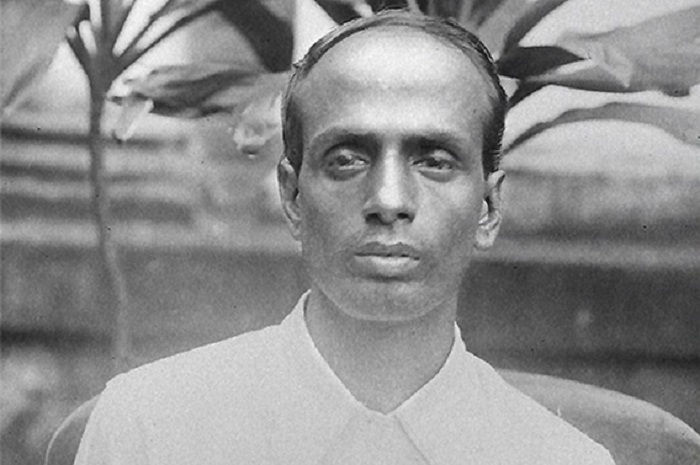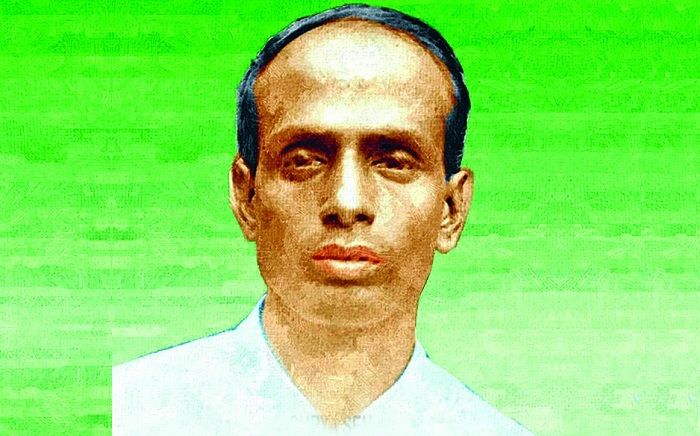Fast Facts
Born: 22 March 1894
Place of Birth: Noapara, Chittagong (now in Bangladesh)
Parents: Ramaniranjan Sen (father), Sashibala (mother)
Spouse: Pushpa Kuntala
Education: National High School, Chittagong College, Behrampore College
Political Association: Indian National Congress, Anushilan Samiti, Indian Republic Army
Political Ideology: Revolutionary
Death: 12 January 1934
Surya Sen was a Bengali independence activist who remembered for his daring raid on the British armoury in Chittagong (now in Bangladesh) in 1930. A school teacher, revered by all as ‘Masterda’, an honorific translating to “a teacher and an elder brother”, he was deeply influenced by nationalist ideals even as a student. Even though the Chittagong Armoury raid was largely unsuccessful, it demonstrated to the British the extent of the public anger against them. A brilliant strategist and charismatic leader, he was able to prevail upon the youth and ladies, in particular, to join the Indian independence movement. Betrayed, Surya Sen was arrested, subjected to appalling torture, and then executed by the British who were unable to tame his nationalistic spirit.

Image Credit https://en.wikipedia.org/wiki/Surya_Sen
Early Life
Surya Sen was born on 22 March 1894 in Noapara, Chittagong to Sashibala and Ramaniranjan Sen, a school teacher. Having lost both his parents at an early age, he was brought up his uncle, Gourimoni. While his studies started at Doyamoyi Primary School, he later got admitted to Noapara English High School, where he studied till Class 8. He switched over to National High School, from where he matriculated in 1912. He first attended Chittagong College and then Behrampore College for his Bachelor of Arts degree.
In 1916, when he was studying at Chittagong College, he was enthused by one of his teachers to join revolutionary activities in the quest for the country’s freedom. Inspired by nationalistic ideals, Surya Sen unfurled the flag of ‘Anushilan Samity’, a revolutionary group. He became even more inspired when studying at Behrampore College he came into contact with the ‘Jugantar’ group.
In 1918, after obtaining his B.A. degree, Surya Sen returned to Chittagong and joined National School Nandankanan as a mathematics teacher. During this period, he started establishing the presence of the ‘Jugantar’ group in Chittagong. He quickly made a name for himself in the society with his lofty ideals, amazing oratory skills, exceptional organisational ability, and above all, an ability to reach and connect with common people. His exalted social status as a school teacher and popularity with the local populace earned him the sobriquet of ‘Masterda’.
Much influenced by the ideals of Mahatma Gandhi, Surya Sen also joined the Indian National Congress. But, like many others, he too was sorely disappointed with Gandhi’s decision to call off the Non-Cooperation movement after the notorious Chauri Chaura incident.

Image Credit : https://dailyasianage.com/news/113661/surya-sen
Chittagong Armoury Raid
With the failure of the Non-Cooperation movement, Surya Sen came to the realisation that only violent revolutionary tactics could help. He decided that for maximum impact, concerted revolutionary strikes on various British installations would be a good way to unsettle the British administration. Thus began the planning of an audacious strike that came to be written in the annals of Indian history as the ‘Chittagong Armoury Raid’.
While the ostensible reason for the ‘Chittagong Armoury Raid’ was to strike at the supposedly invulnerable twin bastions of British power, the real objectives were far grander. Chittagong, at that time, was not only a major centre of British administration but also a trading centre of immense importance with numerous British oil companies operating from there. Because of its location, Chittagong was also a strategic frontline defence against any Japanese attack. Therefore, any strike organized in Chittagong would translate to hitting at one of the nerve-centres of the British occupation of India.
That Sen’s planning was audacious in its concept would be an understatement for along with the seizing of the two armouries, the raid also included destruction of the telegraph office to cut off all communications, and to add insult to injury, an attack on the exclusive club reserved solely for Europeans, usually high-ranking government officials, officers of the military, and the trading companies. The plan called for a series of swift strikes, the ruthless massacre of the members of the club, raids on retailers of firearms, and cutting off of all road and rail linkages. The mini-insurrection would, for some time at least, completely isolate Chittagong from the rest of the British Empire leaving it open to the mercy of the revolutionaries. While Sen was the mastermind of this mindboggling plan, he was ably supported by 65 fellow revolutionaries like Lokenath Bal, Ganesh Ghosh, Ambika Chakraborty, Nirmal Sen, Ananta Singh, as well as, women radicals like Pritilata Waddader and Kalpana Dutta, all coming together under the banner of Indian Republic Army.
At 10 p.m. on the night of 8 April 1930, a band of revolutionaries led by Ganesh Ghosh set off to Dampura to capture the police armoury while Lokenath Bal led another team of rebels to seize the armoury of the Auxiliary Forces. As planned, Chittagong was isolated with the telegraph and telephone lines being cut and the train lines disrupted. Fifteen revolutionaries managed to take control of the European club in Pahartali, however, it being Good Friday, there were not too many members present, and word of the strike somehow got out alerting the British troops who arrived in full strength to salvage the situation. While in terms of planning and execution the armoury raids were perfect, the results were somewhat less than expected; the guns were seized but the ammunition was not present there. Surya Sen and his gang collected whatever they could and escaped into the nearby Jalalabad Hills but not before hoisting the Indian flag and proclaiming the establishment of a ‘Provisional Revolutionary Government’.
The incensed British forces having come to know where the rebels were hiding in the Jalalabad Hills and attacked them. The bloody skirmish cost both parties dear; while as many as 12 revolutionaries were killed, many of them in their teens, including the younger brother of Lokenath Bal, 80 British troops also perished. The revolutionaries who managed to escape reorganised themselves and began a series of guerrilla strikes taking the lives of 22 British officers and 220 others in the ensuing months. Those who had been arrested were tried on 1 March 1932; 12 were sentenced for deportation, 32 were acquitted, and the rest were given sentences ranging from two to three years.
Despite their best efforts, the British could not lay their hand on the mastermind of the Chittagong insurrection as Surya Sen had gone into hiding. He kept moving from one place to another, taking up whatever jobs he could find; sometimes, he was a workman and at other times, he was a farmer, a milkman, or even a priest to escape being detected. The common people of the region who loved and respected him dearly, assisted him greatly by offering him food and shelter as best as they could, often at great risk to their own and their family’s well being.

Image Credit https://hindi.firstpost.com/special/death-anniversary-of-master-da-surya-sen-hero-of-chittagong-armoury-raid-indian-freedom-strugle-revolutionary-activist-pr-80652.html
Arrest & Death
After hiding and constantly moving from one place to another for sometime, luck ran out for Surya Sen. He was betrayed by Netra Sen at whose house he had taken shelter. Netra Sen was unable to resist the temptation of the Rs.10,000 bounty offered by the British on Surya Sen’s head and informed the authorities. In February 1933, the police surrounded Netra Sen’s house in Gairala Village and took Surya Sen into custody. Netra, however, did not live to enjoy the fruits of this treachery; soon after Sen’s arrest, a close rebel associate of ‘Masterda’ arrived at Netra’s home and in front of his wife beheaded him with a long knife while he was having his meal. Netra’s wife, an admirer and supporter of Sen, refused to divulge the name of the murderer to the investigating officer saying that she was ashamed to be the wife of such a traitor and that his killing was justified.
Such was Surya Sen’s charisma, that his incarceration in Chittagong Jail did not prevent the new president of Jugantar Party’s Chittagong branch, Tarakeshwar Dastidar, to plan a daring rescue to liberate him. However, the plot was unearthed and foiled, leading to the arrest of Tarakeshwar, Kalpana Dutta, and others. Both Surya Sen and Tarakeshwar Dastidar were given death sentences and hanged on 12 January 1934. It later came to light that the British had brutally tortured Sen during his last days, breaking all his teeth, and limbs and joints with a hammer in a bid to extract information from him. The extent of torture was so great that Sen had to be hanged in an unconscious state and the prison authorities, fearing a public backlash, put the body in a metal cage and dumped him unceremoniously into the Bay of Bengal without performing any of the funeral rites.
Legacy
The Chittagong uprising of 1930 and Surya Sen’s compelling leadership that saw the large-scale participation of youth and women in the freedom struggle was responsible for a rising clamour for immediate independence for India. It fired the imagination of the youth and led to an upsurge of recruitment into rebel groups. In recognition of his immense contribution to the Indian freedom movement, a residential hall of Dhaka University has been named ‘Masterda Surya Sen Hall’. Both India and Bangladesh issued commemorative stamps in his memory.


